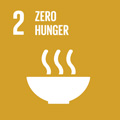- Docente: Andrea Serraino
- Credits: 3
- SSD: VET/04
- Language: Italian
- Moduli: Andrea Serraino (Modulo 1) Alessandro Seguino (Modulo 2) Giampiero Pagliuca (Modulo 3) Alessandra De Cesare (Modulo 4) (Modulo 5) Andrea Serraino (Modulo 6)
- Teaching Mode: In-person learning (entirely or partially) (Modulo 1); In-person learning (entirely or partially) (Modulo 2); In-person learning (entirely or partially) (Modulo 3); In-person learning (entirely or partially) (Modulo 4); In-person learning (entirely or partially) (Modulo 5); In-person learning (entirely or partially) (Modulo 6)
- Campus: Bologna
- Corso: Single cycle degree programme (LMCU) in Veterinary Medicine (cod. 8617)
-
from Jul 02, 2025 to Nov 10, 2025
-
from Jul 09, 2025 to Nov 26, 2025
-
from Jul 16, 2025 to Nov 10, 2025
-
from Jul 02, 2025 to Nov 05, 2025
Learning outcomes
In the food inspection training, the student carries out audits and inspections of slaughterhouses, game handling establishments and certain cutting plants, as appropriate for official veterinarians.
Trainees become familiar with clinical, anatomical-pathological, food hygiene and inspection knowledge in order to determine whether any food is fit or unfit for human consumption and is able to communicate the behaviors and actions usefful to avoid unnecessary suffering for animals that are slaughtered to the food business operators.
The training provide students with the principles and methods used to develop a preventive approach for controlling potential hazards and staying in compliance with new industry and regulatory requirements and to provide the food safety evaluation during the operations carried out from the early stages of primary production, during food processing and manufacturing and still to commercialisation, including import and export.
The student will be able to plan and carry out audits to assess implementation of the hygiene procedures and to control hazards in food businesses to assess what actions implemented in compliance with the legal provisions relating to health controls on the production, to implement plans sampling, even for official controls, and to interpret the results of laboratory tests
Course contents
The specific professional activities will be performed in different planned days programmed (for a total of 54 hours) and they will include:
1) Activities at slaughterhouses that may relate to:
· Official control of animal welfare aspects during transport;
· Assessment of food chain information (official checks checks of livestock registry and drug surveillance);
· Ante-mortem inspection;
· Official control of animal welfare aspects during stunning and bleeding;
· Post-mortem inspection;
· by product management.
2) sampling activities shall have been taken and been subjected to a microbiological test in accordance with self-monitoring plans/official controls;
3) Audit activities and inspections at any of the stages of production, processing and distribution of food of animals origin in production.
4) simulation by virtual sloughterhouse
Students must have their own white coat.
The Syllabus of the course unit and the list of EAEVE Day One Competences that the course unit contributes to achieving can be viewed on the dedicated page
Readings/Bibliography
none
Teaching methods
Pratical training performed togheter with Official Veterinarians during their professional activity; virtual audit activity by virtual sloughterhouse
Assessment methods
Frequency evaluation: the frequency to at least 70% of the lessons is required; test on the virtual slaughterhouse.
Students with DISABILITIES or SLDs must contact the teacher to have adaptations to teaching during the lesson phase or in the final evaluation phase. They will do it by email, by entering the reference staff they are followed by in the C/C.
Teaching tools
Virtual slaughterhouse simulator
Office hours
See the website of Andrea Serraino
See the website of Alessandro Seguino
See the website of Giampiero Pagliuca
See the website of Alessandra De Cesare
See the website of
SDGs

This teaching activity contributes to the achievement of the Sustainable Development Goals of the UN 2030 Agenda.
